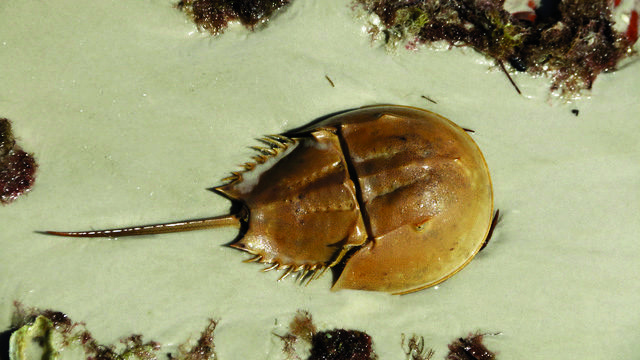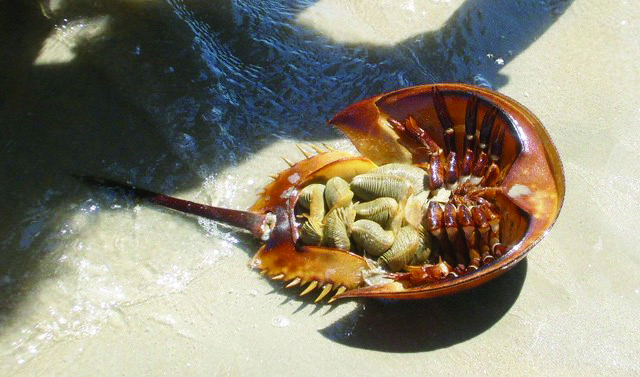By Capt. Chris Thalmann Contributing Writer

March is horseshoe crab breeding season and while these aren’t animals that most people associate with ecotourism, the entire tourism industry should probably throw a party for these unique creatures. After all, they’re helping us all get through the COVID mess. The horseshoe crab plays a huge role in ensuring the safety of almost every single vaccine, shot, and implantable or injectable device that’s been used here in the US since the 1970s. That includes several COVID vaccines now coming to market. And it’s a role that only the horseshoe crab can play. Horseshoe crabs are known as living fossils and have remained pretty much unchanged for a very long time. Fossils dating back 450 million years look much like those found today on the east coast of North America. More closely related to scorpions and spiders than crabs, they found their little niche in nature way back when and haven’t really had to evolve since. The horseshoe crab’s secret superpower – besides looking like the star of an alien movie – is all in their blood. Specifically, it’s their blood’s ability to clot when exposed to bacteria. That’s a critical skill when your immune system is roughly 450 million years old! If you’re thinking what’s the big deal – human blood and the blood of most animals clots too – you’re not wrong. But iron-based red blood tends to clot slowly. The horseshoe crab’s immune system is so primitive, their copper-based light-blue blood clots instantly to protect them from infection. If you want to see this in action, pour a little cream into a shot glass and add some lime juice on top. Stir or shake. It’s like instant isolation of invaders. The magic behind this trick is that horseshoe crab’s blood contains a substance known in shorthand as LAL. Their blood is the only known naturally-occurring source of LAL, and it’s the LAL that causes the instantaneous clotting. Roughly 500,000 horseshoe crabs are “milked” every year by the pharmaceutical industry for their blood. The LAL from their blood is then used to test IV drips, shots, vaccines, or anything designed to go into the human body for bacteria. If there’s even a hint of contamination the manufacturers will know instantly and can fix the problem before products get to market. The milked crabs are released but upwards of 50,000 die every year from the procedure. Because of this there’s real concern about the crabs eventually becoming endangered, as their eggs are a key food source for certain birds, fish, and other creatures. So, the next time you see a horseshoe crab, admire them for the role they play in helping us all live better lives. And if you’d like to help them in turn, go to myfwc.com and click the Engaging in Conservation / Research / Saltwater tabs to report your sightings to FWC. Have a great month, hope to see you on the water! Captain Chris Thalmann Owner | Aqua Adventure Tours, Inc. aquaadventuretours.com
Captain Chris Thalmann
Owner | Aqua Adventure Tours, Inc. • aquaadventuretours.com

